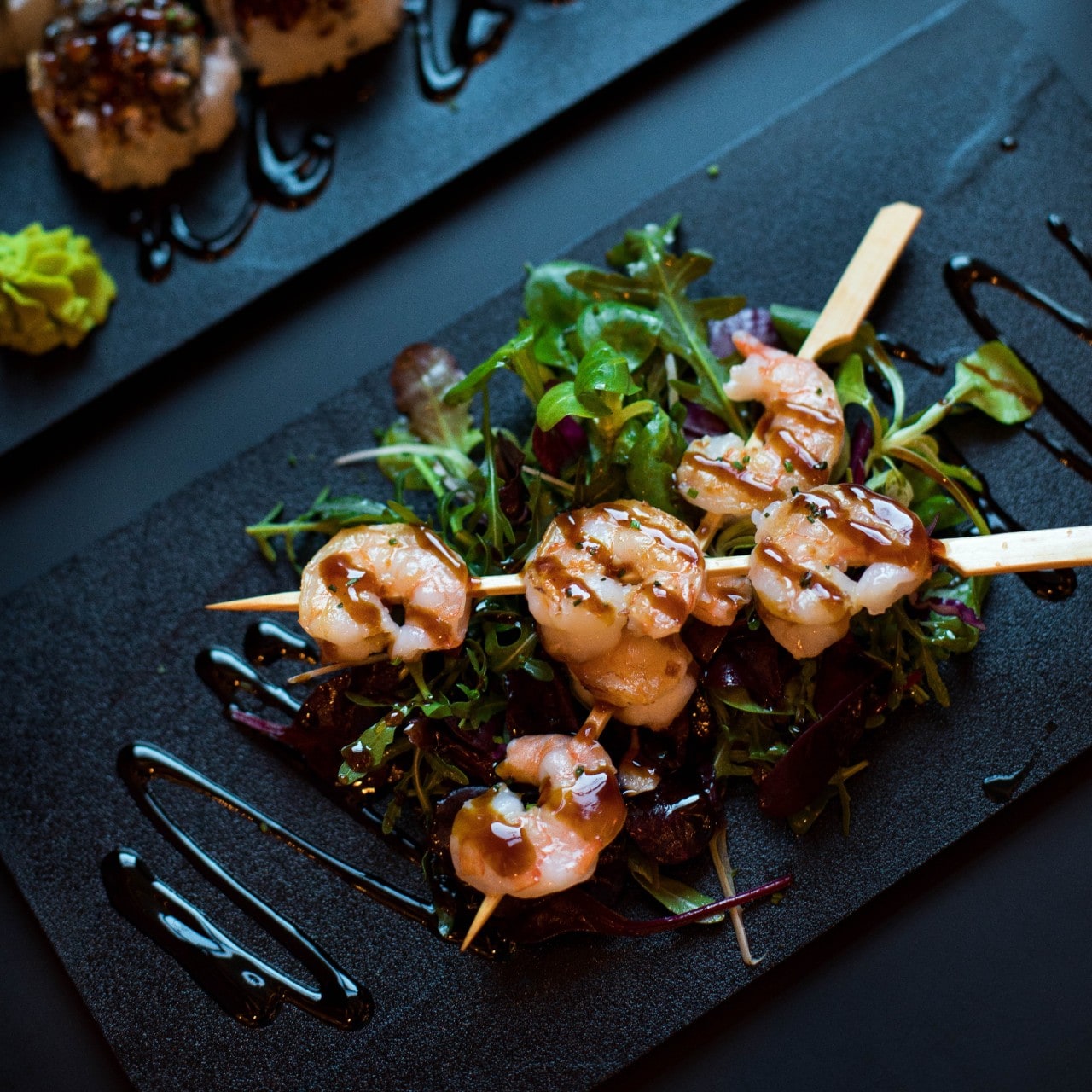
1. Landscape Technique
Taking inspiration from landscape gardens, this linear arrangement of food is usually kept low and long.
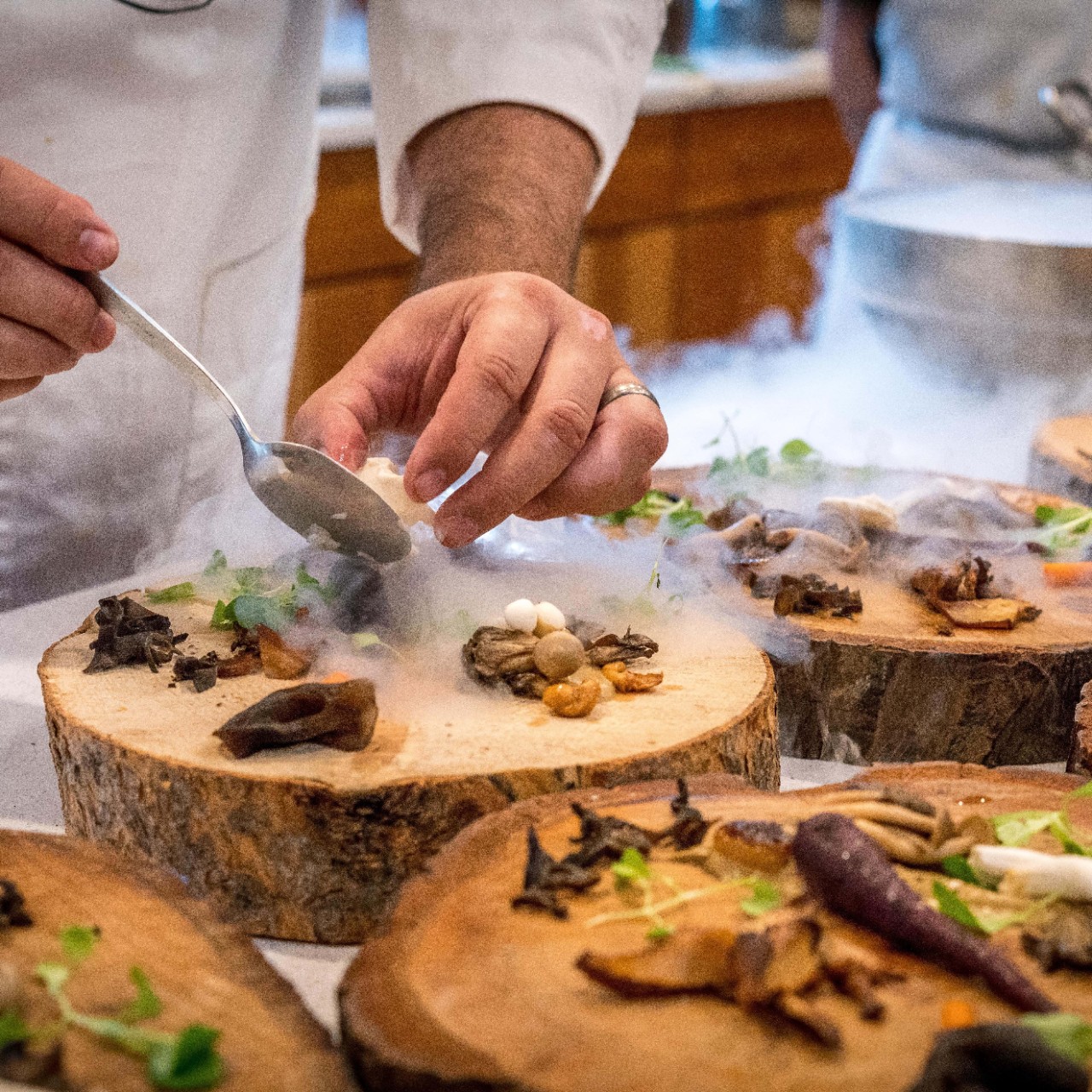
3. Food on organic materials Technique
Using organic materials such as wood, slate and stone as a plating device lends a more rustic and back-to-nature feel to dishes.
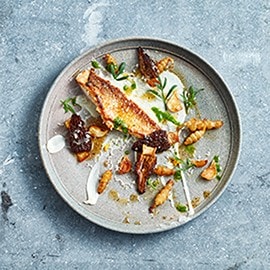
5. The Nordic Look Technique
Make ribbons or chunks of vegetables and scatter herbs on a dish to garnish for seemingly effortless style. ‘Gone Fishing’ by the Danish chef and food stylist Mikkel Karstadt is a good place to look for inspiration; follow him on Instagram
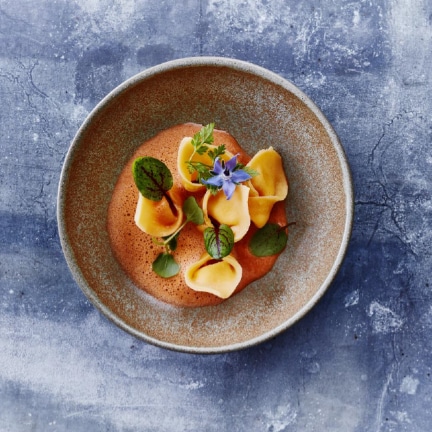
7. Bathing Technique
Bathe fish in broth or sauce. For example, these tortellini with a shellfish sauce or coquilles with chicory, truffle foam, goat cheese and shrimps.
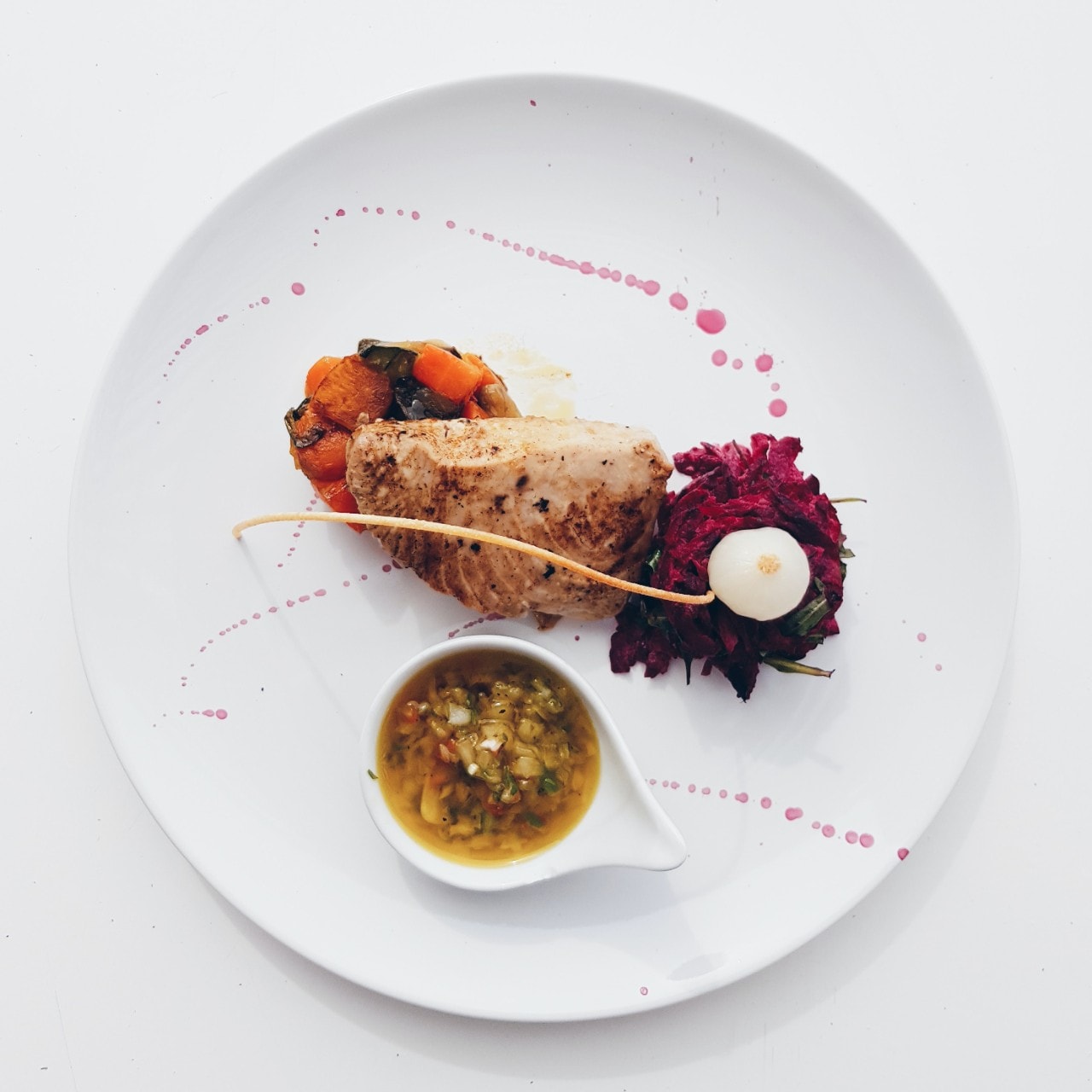
2. Free-form Technique
Like many modern paintings, free form plating may seem carelessly strewn across a plate, but each stroke and food placement is carefully thought out to create an abstract yet intriguing “painting” on a plate.
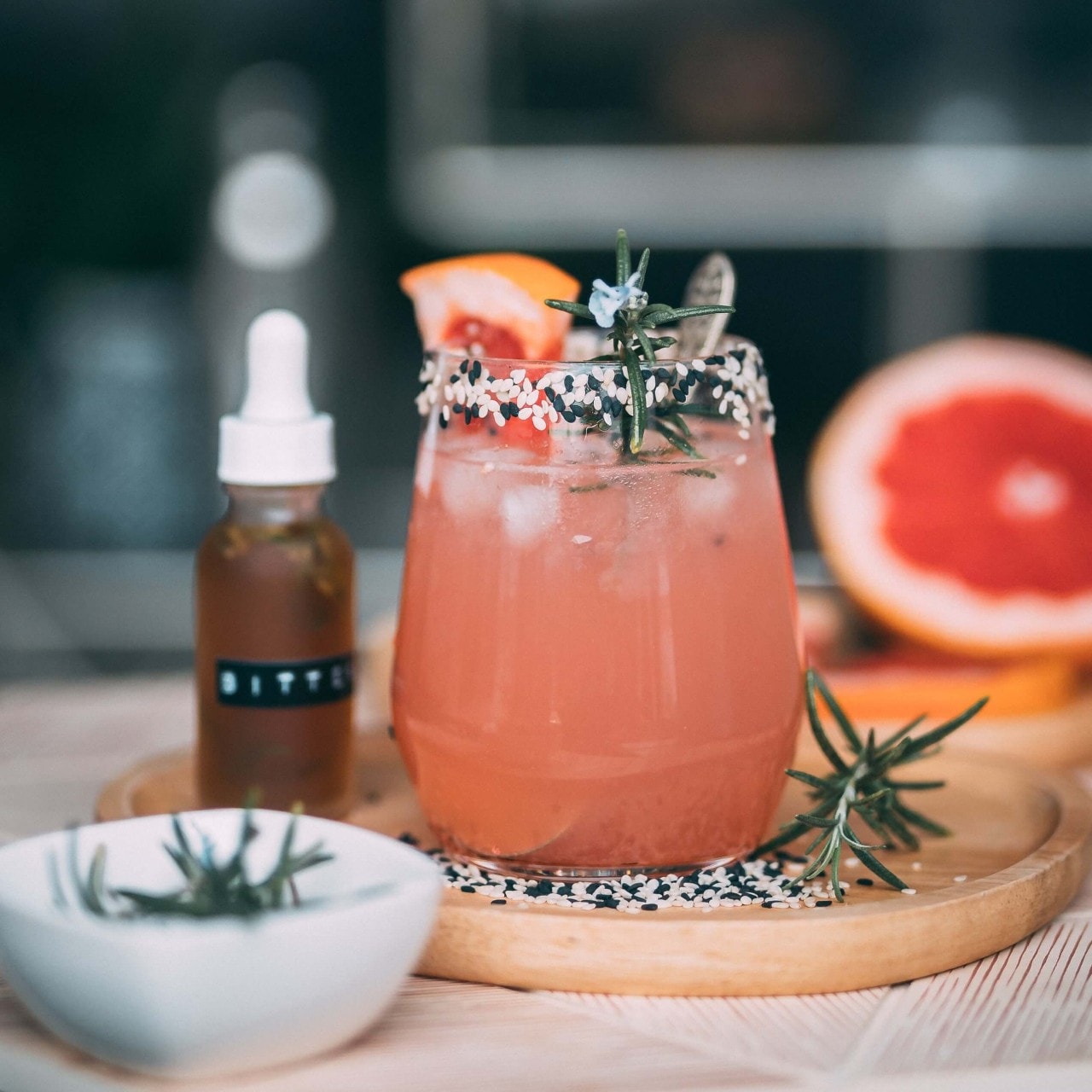
4. Futuristic Technique
Making use of sleek materials like metal, glass and steel, futuristic plating creates a cutting edge and futuristic plating like the example below.
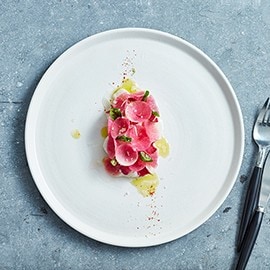
6. Hide and Seek Technique
Layering adds an element of playfulness and surprise to the dish. Think a puffed rice cracker covering crab meat, thinly sliced radishes hiding a yummy sea bass tartare...
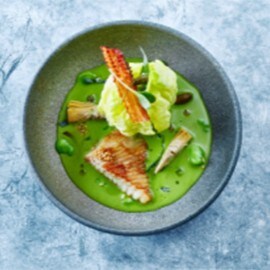
8. Super Bowl Technique
Bowl food is a massive trend, with cookbooks and restaurants to match.
Try a more elegant styled bowl; used for smaller dishes, like starter or entremets.
FANCY FOOD PLATING STARTS WITH FINDING THE RIGHT PLATE
Which plate you choose can make or break your dish, says South African Chef Jack Coetzee. Try to avoid symmetry, it’s not very interesting. And you need to create some height on your plate. However, if you are blatantly going for symmetry, then you can get away with it because it’s your intention. But the plates do look very average if you’re trying to do something and you end up with it looking symmetrical. You can follow his course on plating in our UFS Academy for a more visual explanation.
Here are a couple of take-outs he shares on the different shapes of plates you can use and their possibilities.
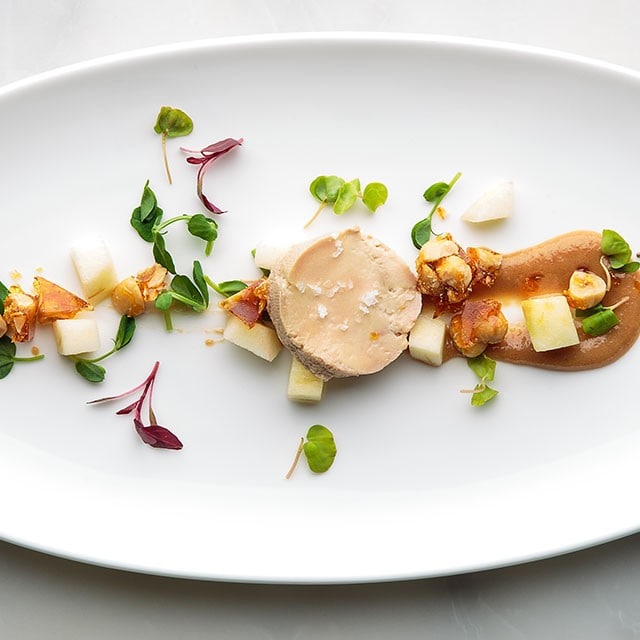
Rectangular or elongated plate
Using a rectangualr plate is effective if you have lots of small little garnishes that can wind their way through the length of the plate, making it look like a garden.
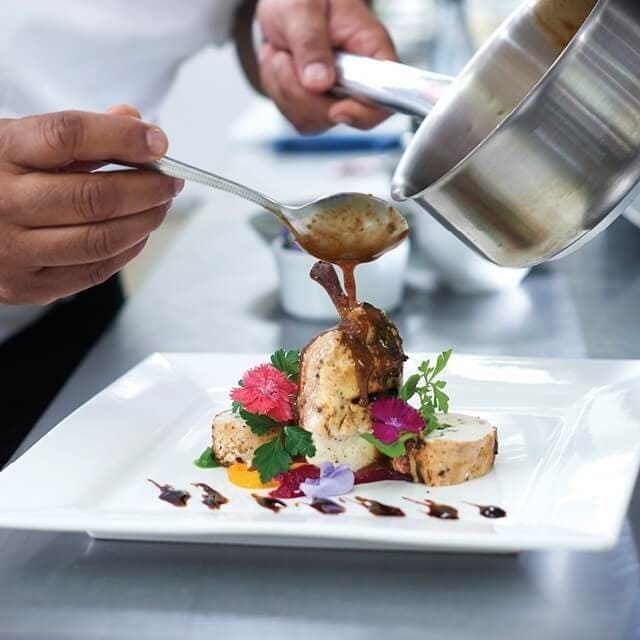
Square plate
This is not the easiest shape to work with. You have to use the Rule of Thirds, which is a theory dictating how an image (in this case your plate) should be composed in order to create an aesthetically pleasing result. You basically break your plate up into a grid system of 9 block and try to avoid using the bull’s eye itself because that’s a so-called dead spot. Also try not to use any of the spots in the corners.
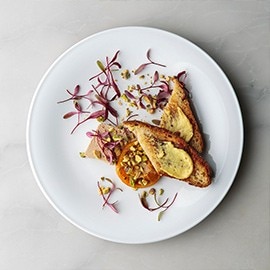
Round plate
These are most commonly used. The same rule applies to your grid system on this plate, except you don’t have to worry about all the dead corners. Try not to get anything in the middle unless it’s deliberately in the middle.
